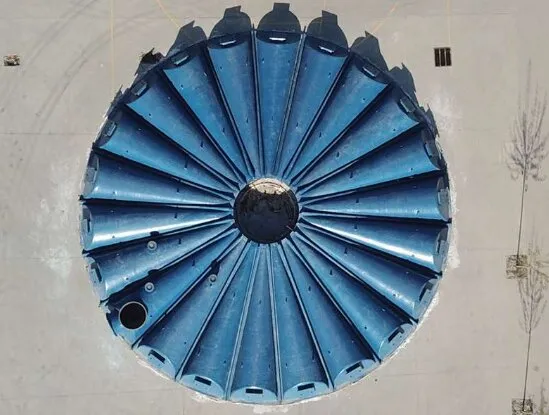
-
 Afrikaans
Afrikaans -
 Albanian
Albanian -
 Amharic
Amharic -
 Arabic
Arabic -
 Armenian
Armenian -
 Azerbaijani
Azerbaijani -
 Basque
Basque -
 Belarusian
Belarusian -
 Bengali
Bengali -
 Bosnian
Bosnian -
 Bulgarian
Bulgarian -
 Catalan
Catalan -
 Cebuano
Cebuano -
 China
China -
 China (Taiwan)
China (Taiwan) -
 Corsican
Corsican -
 Croatian
Croatian -
 Czech
Czech -
 Danish
Danish -
 Dutch
Dutch -
 English
English -
 Esperanto
Esperanto -
 Estonian
Estonian -
 Finnish
Finnish -
 French
French -
 Frisian
Frisian -
 Galician
Galician -
 Georgian
Georgian -
 German
German -
 Greek
Greek -
 Gujarati
Gujarati -
 Haitian Creole
Haitian Creole -
 hausa
hausa -
 hawaiian
hawaiian -
 Hebrew
Hebrew -
 Hindi
Hindi -
 Miao
Miao -
 Hungarian
Hungarian -
 Icelandic
Icelandic -
 igbo
igbo -
 Indonesian
Indonesian -
 irish
irish -
 Italian
Italian -
 Japanese
Japanese -
 Javanese
Javanese -
 Kannada
Kannada -
 kazakh
kazakh -
 Khmer
Khmer -
 Rwandese
Rwandese -
 Korean
Korean -
 Kurdish
Kurdish -
 Kyrgyz
Kyrgyz -
 Lao
Lao -
 Latin
Latin -
 Latvian
Latvian -
 Lithuanian
Lithuanian -
 Luxembourgish
Luxembourgish -
 Macedonian
Macedonian -
 Malgashi
Malgashi -
 Malay
Malay -
 Malayalam
Malayalam -
 Maltese
Maltese -
 Maori
Maori -
 Marathi
Marathi -
 Mongolian
Mongolian -
 Myanmar
Myanmar -
 Nepali
Nepali -
 Norwegian
Norwegian -
 Norwegian
Norwegian -
 Occitan
Occitan -
 Pashto
Pashto -
 Persian
Persian -
 Polish
Polish -
 Portuguese
Portuguese -
 Punjabi
Punjabi -
 Romanian
Romanian -
 Russian
Russian -
 Samoan
Samoan -
 Scottish Gaelic
Scottish Gaelic -
 Serbian
Serbian -
 Sesotho
Sesotho -
 Shona
Shona -
 Sindhi
Sindhi -
 Sinhala
Sinhala -
 Slovak
Slovak -
 Slovenian
Slovenian -
 Somali
Somali -
 Spanish
Spanish -
 Sundanese
Sundanese -
 Swahili
Swahili -
 Swedish
Swedish -
 Tagalog
Tagalog -
 Tajik
Tajik -
 Tamil
Tamil -
 Tatar
Tatar -
 Telugu
Telugu -
 Thai
Thai -
 Turkish
Turkish -
 Turkmen
Turkmen -
 Ukrainian
Ukrainian -
 Urdu
Urdu -
 Uighur
Uighur -
 Uzbek
Uzbek -
 Vietnamese
Vietnamese -
 Welsh
Welsh -
 Bantu
Bantu -
 Yiddish
Yiddish -
 Yoruba
Yoruba -
 Zulu
Zulu
Jan . 13, 2025 12:10
Back to list
frp settler
Fiber Reinforced Plastic (FRP) settlers have emerged as a revolutionary innovation within industrial and environmental engineering sectors, standing out as indispensable assets across diverse applications. By marrying advanced composite materials with engineering innovation, FRP settlers are engineered to optimize sedimentation processes, maximizing efficiency while minimizing environmental impacts. Drawing from real-world applications and authoritative insights, these structures exemplify exceptional performance in waste management and water treatment.
Moreover, the installation and maintenance process of FRP settlers is simplified compared to more traditional materials. Their lightweight nature reduces transportation costs and facilitates easier handling during setup. Reduced assembly and maintenance time translates directly to decreased downtime, an invaluable advantage in continuous processing environments. Operators and technicians find FRP systems straightforward to manage, with maintenance schedules less frequent and less daunting than those required by metal or concrete alternatives. Seasoned professionals in the field advocate for the transition to FRP settlers as a strategic move towards sustainable engineering practices. Their life cycle benefits are complemented by a smaller environmental footprint compared to older, traditional systems. As industries pivot towards greener technologies, the integration of FRP settlers represents a commitment to sustainable development and ecological responsibility. To realize the full potential of FRP settlers, stakeholders are encouraged to engage with experts who provide comprehensive assessments and customized solutions. This ensures that each FRP settler installation is optimized for performance, delivering maximized returns on investment. By investing in FRP technology, businesses not only bolster their operations but also establish themselves as leaders in innovation and environmental stewardship.


Moreover, the installation and maintenance process of FRP settlers is simplified compared to more traditional materials. Their lightweight nature reduces transportation costs and facilitates easier handling during setup. Reduced assembly and maintenance time translates directly to decreased downtime, an invaluable advantage in continuous processing environments. Operators and technicians find FRP systems straightforward to manage, with maintenance schedules less frequent and less daunting than those required by metal or concrete alternatives. Seasoned professionals in the field advocate for the transition to FRP settlers as a strategic move towards sustainable engineering practices. Their life cycle benefits are complemented by a smaller environmental footprint compared to older, traditional systems. As industries pivot towards greener technologies, the integration of FRP settlers represents a commitment to sustainable development and ecological responsibility. To realize the full potential of FRP settlers, stakeholders are encouraged to engage with experts who provide comprehensive assessments and customized solutions. This ensures that each FRP settler installation is optimized for performance, delivering maximized returns on investment. By investing in FRP technology, businesses not only bolster their operations but also establish themselves as leaders in innovation and environmental stewardship.
Next:
Related Products









